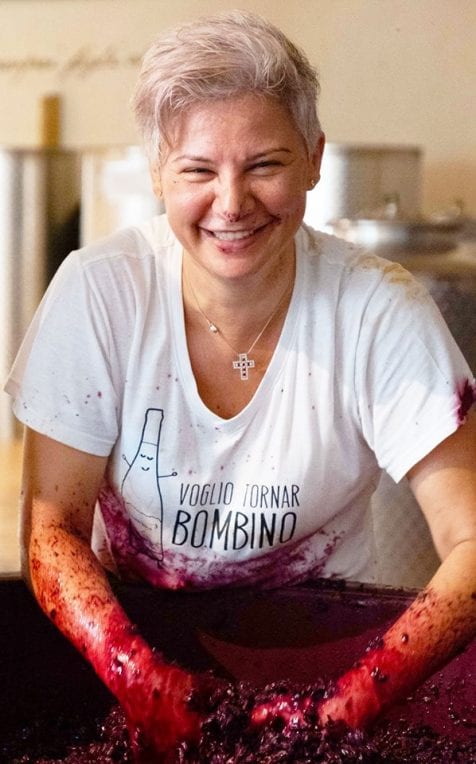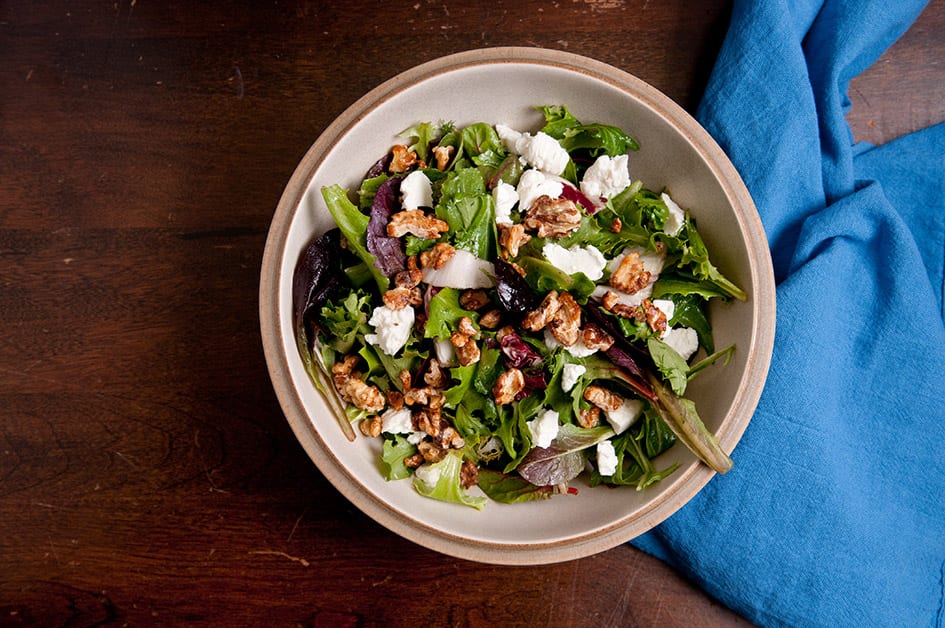Orange Wine
The days are getting longer, and the daffodils are popping up along with the lists of recommended Spring wines to taste – aromatic and zippy whites and lighter French reds like Gamay. All wonderfully light choices as we come out of our heavy hibernation. We hesitate to label a season to a particular wine. If your heart desires, you can Rose’ all day and all year long. However, Spring awakens our desire to discover something lively and new. In the spirit of this seasonal change, we invite you to try Orange wine - if you have not already. It has been in the spotlight as of late but really dates back to ancient times. It appears that Orange wine doesn't seem to be going anywhere and has become a bit of a zeitgeist for natural wine enthusiasts and oenophiles.
 What is Orange Wine?
What is Orange Wine?
The Orange wine emergence has caused some confusion. It is not made or mixed with oranges; it is only the colour. Orange wine is not even a category of wine. It really is just a "skin contact wine" with colours that vary from saffron, amber, to deep orange. In short, it is a white wine made like a red wine. White grapes are left in contact with their skins (macerated or mashed) for days, weeks or months during fermentation in a large vessel (usually cement or ceramic). In white wine production, the skins are typically removed after pressing. It is different from Rosé as it is made with red grapes and the skins are left on for only part of the time.
Orange winemaking is a very natural process with little to no additives and at times, not even yeast. It can also be described as a non-interventionist style of white winemaking.
A Little History
The orange vinification borrows from the ancient practice of Caucus (modern-day Georgia) and dates back as far as 5000 years. The maceration of grapes, skins and juices were done in conical earthenware vats made from a clay called Kvevri (Kev-ree). These clay pots were buried and sealed with stones or beeswax for typically six months. This ancient method is well integrated in Northeastern Italy, Slovenia and Georgia.

Georgian winemaker and a kvevri from 1881
Orange You Glad to See Me?
When the green skin stays in contact with the juice, wines end up with its orange tint. The deep colour actually comes from lignin in grape seeds. The method of this maceration (a process of soaking crushed grapes, seeds, and stems in a wine must to extract colour and aroma) results in a wine in a category of itself. Words used to describe orange wine include: "bewitching, delicious, and complex." Not a “starter wine.” If you tried one Orange wine and didn’t like it – do not let that put you off completely. Like red or white, there are so many different varietals. This hybrid wine has aromas and acidity of a white and tannins and heft of a red.
Because of the many white varietal choices, there is a plethora of aromas and flavours used to describe an Orange wine. Aromas of white lilies, candied ginger, thyme and tasting notes such as papaya, toast, nuts, honeysuckle and lychee -- just to name a few. Their grippy tannins mean they typically need to be served around room temperature, and sometimes a little decanting wouldn't hurt.
Meet Our Featured Orange Winemaker: Valentina Passalacqua

? Valentina Passalacqua
From Gargano, the spur on the heel of Italy comes wine with all the energy and passion that
biodynamic winemaking promises.
Valentina Passalacqua was on a conventional path to success. She was studying law and set to contribute to her family’s industrial fortune. But she was drawn to the joy and spontaneity of the "peasant life" learned from her grandmother. Valentina's s
trong connection to earth and the cosmos results in wine the way nature intended it to be. First and foremost in her winemaking is an ethos to protect her land and the earth for her daughters and future generations. A winning and magical combination that produces a stellar natural wine.
Valentina manages soil biodiversity with biodynamic preparations, harvests by hand, ferments spontaneously, and keeps her wine pure without fining or filtering it. Tasting Valentina’s Orange wine Terra Minuta with this in mind, you realise that great wine is as much about getting out of the way as it is about imposing winemaking techniques on the fruit.
Food Pairing
Just as tricky as it is to rhyme a word with orange; it is sometimes as difficult to match foods with Umami. But, guess what? Orange wine and Umami are a match made in heaven. Try pairing Korean dishes with fermented Kimchi or the bitter flavours in artichokes or asparagus. This is an extremely versatile wine due to its high acid and low alcohol content. It stands up very well to dishes with heavy fat and pairs brilliantly with lamb. And because it is so bold, Orange wine will hold its own with spicy curry dishes and Moroccan cuisine.
In celebration of the season, try pairing
Valentina Passalacqua's Terra Minuta with a Spring salad of mixed arugula, toasted walnut, goat cheese (or feta) and a healthy vinaigrette. Terra Minuta is made with the Italian indigenous white grapes of Fiano and Greco and is an accessible natural wine with fresh flavours of citrus and crisp orchard acidity.

Try pairing Terra Minuta with Arugula Spring salad with toasted walnuts, goat cheese and vinaigrette
 What is Orange Wine?
The Orange wine emergence has caused some confusion. It is not made or mixed with oranges; it is only the colour. Orange wine is not even a category of wine. It really is just a "skin contact wine" with colours that vary from saffron, amber, to deep orange. In short, it is a white wine made like a red wine. White grapes are left in contact with their skins (macerated or mashed) for days, weeks or months during fermentation in a large vessel (usually cement or ceramic). In white wine production, the skins are typically removed after pressing. It is different from Rosé as it is made with red grapes and the skins are left on for only part of the time.
Orange winemaking is a very natural process with little to no additives and at times, not even yeast. It can also be described as a non-interventionist style of white winemaking.
A Little History
The orange vinification borrows from the ancient practice of Caucus (modern-day Georgia) and dates back as far as 5000 years. The maceration of grapes, skins and juices were done in conical earthenware vats made from a clay called Kvevri (Kev-ree). These clay pots were buried and sealed with stones or beeswax for typically six months. This ancient method is well integrated in Northeastern Italy, Slovenia and Georgia.
What is Orange Wine?
The Orange wine emergence has caused some confusion. It is not made or mixed with oranges; it is only the colour. Orange wine is not even a category of wine. It really is just a "skin contact wine" with colours that vary from saffron, amber, to deep orange. In short, it is a white wine made like a red wine. White grapes are left in contact with their skins (macerated or mashed) for days, weeks or months during fermentation in a large vessel (usually cement or ceramic). In white wine production, the skins are typically removed after pressing. It is different from Rosé as it is made with red grapes and the skins are left on for only part of the time.
Orange winemaking is a very natural process with little to no additives and at times, not even yeast. It can also be described as a non-interventionist style of white winemaking.
A Little History
The orange vinification borrows from the ancient practice of Caucus (modern-day Georgia) and dates back as far as 5000 years. The maceration of grapes, skins and juices were done in conical earthenware vats made from a clay called Kvevri (Kev-ree). These clay pots were buried and sealed with stones or beeswax for typically six months. This ancient method is well integrated in Northeastern Italy, Slovenia and Georgia.
 Georgian winemaker and a kvevri from 1881
Georgian winemaker and a kvevri from 1881 ? Valentina Passalacqua
? Valentina Passalacqua Try pairing Terra Minuta with Arugula Spring salad with toasted walnuts, goat cheese and vinaigrette
Try pairing Terra Minuta with Arugula Spring salad with toasted walnuts, goat cheese and vinaigrette
